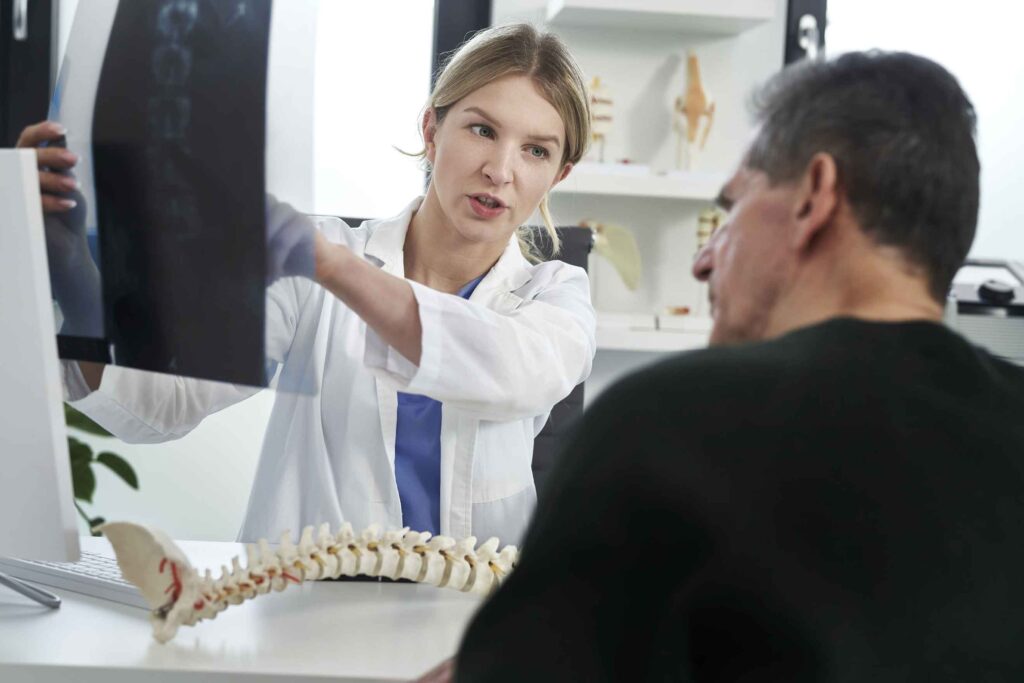A network of nerves that extends from your head to your lower back is known as your spinal cord. The term “myelopathy” refers to any spinal cord injury resulting from a wide range of reasons. Your neck contains the cervical spine. The spinal cord in your neck is compressed by a condition called cervical spondylotic myelopathy (CSM). The spinal cord can be compressed by applying pressure, a pinch, or a squeeze. Spondylosis refers to any age-related damage that develops spontaneously in the spine. This brings to mind ailments like osteoarthritis, disc degeneration, and ruptured discs.
Adults 50 years and older are frequently impacted by CSM. Men may experience it earlier than women do.
In senior people, cervical spondylotic myelopathy (CSM) is one of the most frequent causes of spinal cord dysfunction. The spinal cord is one of the most crucial parts of the human body. An array of symptoms could appear if this structure were to sustain any damage. This makes sense because the spinal cord serves as the primary neurological pathway for transmitting signals from the brain to the rest of the body.
WHAT CAUSES CERVICAL SPONDYLOTIC MYELOPATHY?
Pressure on the spinal cord might result from changes to your spine’s ligaments, discs, and bones. The spine is occasionally put under pressure by growths known as bone spurs. These alterations frequently take place as we age normally. Other causes of CSM include spinal arthritis and spinal cord damage.
CSM can also lead to :
- Bone Spurs
- Disc Herniation
- Rheumatoid Arthritis

CERVICAL SPONDYLOTIC MYELOPATHY SYMPTOMS
The signs of CSM develop gradually. They may consist of :
- Neck stiffness or discomfort.
- Arm ache.
- Weakness in your arms and legs or numbness in your hands.
- Stiff legs or fingers.
- Difficulty in walking.
- A lack of bowel or bladder control.
HOW IS CERVICAL SPONDYLOTIC MYELOPATHY DIAGNOSED?
One of the following tests may be prescribed by a physician if they have a suspicion that the patient has CSM :
- X-ray photography
- MRI images
- CT scan
- Myelogram

CSM TREATMENT OPTIONS
Many medical professionals will advocate for cautious treatment when CSM symptoms are minimal. Before recommending surgery to a patient, doctors almost always try all nonsurgical options first. The choices for conservative treatment typically include :
- Padded Neck Collar :- A cervical collar with padding can aid to lessen neck motion. The neck’s muscles can then relax because they are being held in place as a result. This should only be a temporary solution, though, as wearing a neck collar for an extended period of time may cause the neck muscles to gradually weaken.
- Medication :- There are numerous drugs that medical professionals might recommend for CSM. Although oral corticosteroids, epidural injections, and opioids are all useful in treating CSM, NSAIDs are a common method of therapy.
- Physical therapy :- A number of exercises are excellent for strengthening the neck muscles, which in turn improves the patient’s range of motion and flexibility. Additionally, this will prepare the neck muscles to withstand the forces that regular activities may place on them.
If non-invasive treatments are unable to relieve your symptoms, your doctor may advise surgery. Surgeons can use an anterior or posterior approach combined with a laminectomy to do a discectomy and fusion.
If CSM is not treated, it may worsen. To develop a plan of treatment to control your symptoms, consult our expert at Specialty Care Clinics. Contact us at (469) 545-9983 to book an appointment.
